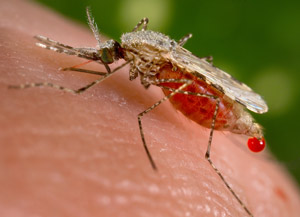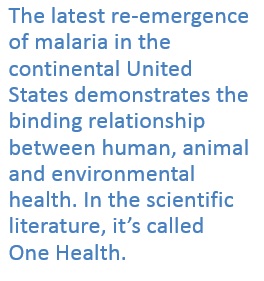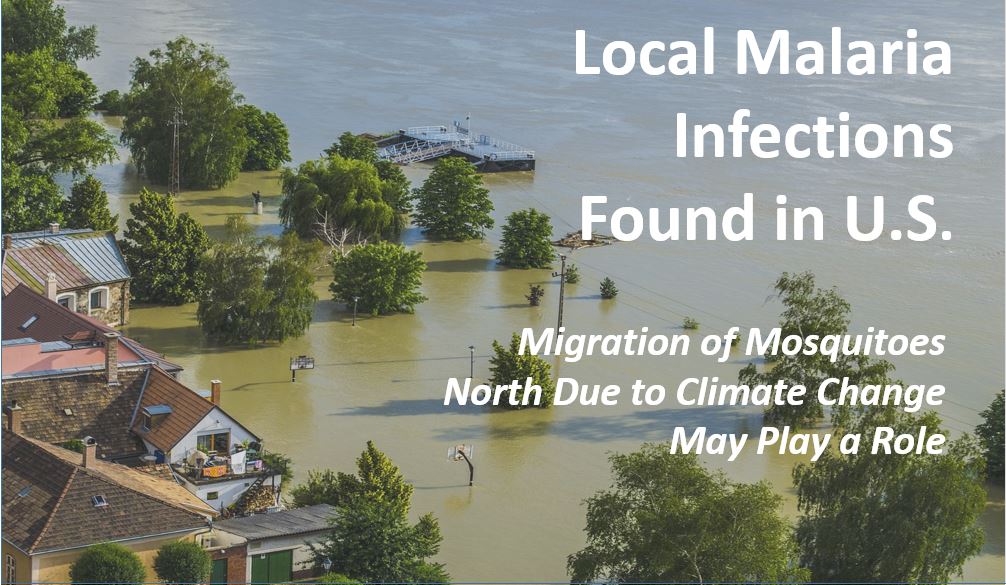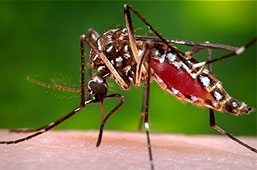By Allison Kozicharow; Edited by Elizabeth Fine
In June the Centers for Disease Control and Prevention issued a health alert identifying five cases of malaria in Florida and Texas — the first locally acquired malaria infections to occur in 20 years. In July, two more locally acquired malaria cases occurred in Sarasota County, Florida, bringing the latest total to seven.
 As WiRED International’s malaria modules explain, malaria is a serious and sometimes fatal noncommunicable disease. It is caused by a parasite (an organism that lives on another creature) that commonly infects a certain type of mosquito that feeds on humans.
As WiRED International’s malaria modules explain, malaria is a serious and sometimes fatal noncommunicable disease. It is caused by a parasite (an organism that lives on another creature) that commonly infects a certain type of mosquito that feeds on humans.
Indeed, the majority of WiRED’s community health workers in Kenya have not only suffered from the illness themselves, often at regular intervals, but recognize it as one of the top endemic infections they find in the more than 10,000 people a month they serve with health services.
So how did locally contracted cases of malaria emerge in the U.S. after 20 years of being eradicated? None of the seven affected individuals had travelled internationally. Increasingly, scientists suggest that climate change plays an important role in the expanded range of mosquito-borne diseases, as warmer and wetter climates provide an attractive habitat for mosquitoes. Although travelers can contract malaria anytime and bring it home to areas where malaria does not exist, people catching the disease locally suggests that an expanded mosquito habitat plays a role.
Extreme climate and weather patterns such as droughts, heat waves, floods and rainfall are increasing in severity and regularity across the globe. Due to these changes mosquitoes are breeding and thriving in higher latitudes and altitudes. In particular, ongoing heat waves plague both Florida and Texas as well as other parts of the U.S. and the world.
such as droughts, heat waves, floods and rainfall are increasing in severity and regularity across the globe. Due to these changes mosquitoes are breeding and thriving in higher latitudes and altitudes. In particular, ongoing heat waves plague both Florida and Texas as well as other parts of the U.S. and the world.
The latest re-emergence of malaria in the continental United States demonstrates the binding relationship between human, animal and environmental health. In the scientific literature, it’s called One Health. A number of papers and studies1 within the past 20 years have described this relationship and forecasted the impact of warming temperatures on the expanded range of mosquitos, ticks and animals and their impact on human health. Instances of these adverse One Health interactions will increase as temperatures rise globally.
As climate change grows unchecked, mosquitoes will continue to migrate out of purely tropical areas of the world and will cause an increase in all mosquito-borne diseases.
1Selnow, Othman and Katchani .(2017). The Importance of a One Health Perspective in a Changing Environment. The Medical Journal of Southern California Clinicians; 20(1), 23-26.
https://socalclinicians.org/periodical/Volume%2011.pdf
Malaria
According to the World Health Organization’s overview of malaria:
- In 2021, nearly half of the world’s population was at risk of malaria.
- That year, there were an estimated 247 million cases of malaria worldwide.
- The estimated number of malaria deaths stood at 619,000 in 2021.
- The WHO African Region carries a disproportionately high share of the global malaria burden. In 2021, the Region was home to 95% of malaria cases and 96% of malaria deaths. Children under 5 accounted for about 80% of all malaria deaths in the Region.
CDC Recommendations for the Public vis-à-vis Malaria
- Take steps to prevent mosquito bites and control mosquitos at home to protect yourself from any mosquito-borne illness.
- Before you travel, learn about the health risks and precautions for malaria and other diseases for your destination.
- If you are traveling internationally to an area where malaria occurs, talk to your healthcare provider about medicines to prevent you from getting malaria.
- If you have traveled to an area where malaria occurs and develop fever, chills, headache, body aches, and fatigue, seek medical care and tell your healthcare provider that you have traveled.
The Mosquito
- Diet: Blood
- Family: Culicidae
- Number of species: 3,500
- Average life span in the wild: 2 weeks to 6 months
- Size: 1/8 to 3/4 in (0.3 to 2 cm)
- Group name: Swarm
- Natural predators: Bats, Birds, Fish, Frogs and Tadpoles, Turtles, Dragonflies, Damselflies, Aquatic Beetles, Spiders



